Meet just some of our inspiring students and researchers who are helping to push the boundaries of what we know about our universe, from improving the accuracy of our GPS systems, to simulating jets from blackholes, to observing and cataloguing exoplanets outside our solar system.
We’re extremely proud of the impact this work has for and from our small island home, Tasmania, to the rest of the world.
Georgia Stewart, PhD in Astronomy and Astrophysics candidate
Georgia grew up in Launceston and, during her early school years, was more interested in art and sport than maths or science. This changed around Year 10, when a great science teacher encouraged her to be more inquisitive. Georgia’s interest in astrophysics and black holes started there and continued throughout her university studies.
“My research looks at objects called Active Galactic Nuclei (AGN)," Georgia said.
"These are the really powerful cores of galaxies that churn out enormous amounts of energy. Under some circumstances, this energy comes out as a pair of collimated, relativistic jets of superheated plasma which can reach distances far beyond the reaches of their host galaxy.
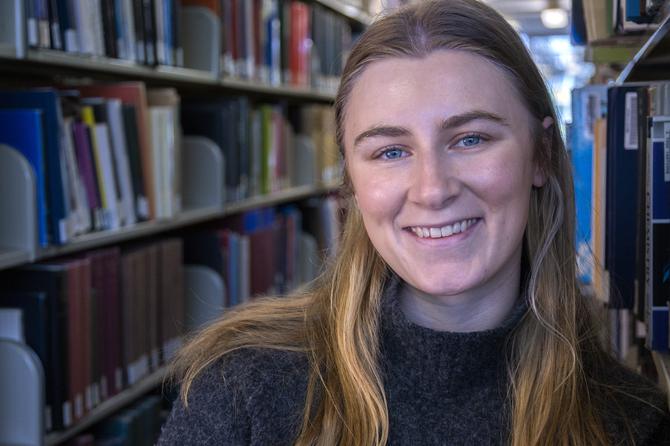
“This is the specific part of an AGN that I study. These jets aren't always active, and researchers think that they go through a life-cycle where active periods are followed by a quiet phase and then a restarted phase.
“Because of the output and sheer scale of AGN jets, it is thought that they're important mechanisms for transporting energy away from the centres of galaxies. This affects the star formation rate, controls the size of the galaxy but it can also add energy and turbulence into the wider intergalactic medium.
“Understanding how these jets behave, how they interact with their galactic and inter-galactic environments, and for how long they're active plays a huge part in terms of how we understand the evolution, growth, and death of large galaxies across cosmic time.
“In my PhD, I'm looking at computer simulations of these jets to see what happens when they turn off and what observable signatures we might see in the quiet phase. I hope this research will add a more complete picture to the lifecycle of AGN jets and help astronomers identify the remnants of jet activity more accurately.”
Katie Vandorou, PhD in Physics graduate
Katie’s field of expertise is exoplanets, which are planets outside of our solar system.
Originally from Greece, she completed her undergraduate degree in the United Kingdom before moving to Tasmania in 2017 to undertake her Honours degree and PhD. Her next stop is the United States, where she is about to take up her dream job as an astrophysicist at NASA’s Goddard Space Flight Centre in Maryland.
“I grew up in Greece, in a very quiet town close to the famous historic site of Marathon," Katie said.
"I always loved exploring and figuring things out as a kid, which developed into a love for science as I got older. I excelled in mathematics at school, but I was pretty bad at physics even though I enjoyed it.
Knowing that I wanted to go into science and academia, I loved the challenge that going into astrophysics would present. It is a beautifully niche science that has opened up so many more possibilities than I could ever imagine.
“Exoplanets have always captured people’s imagination, but we don’t actually know much about them. What types of planets are there? What kind of stars do they orbit? How do they form?
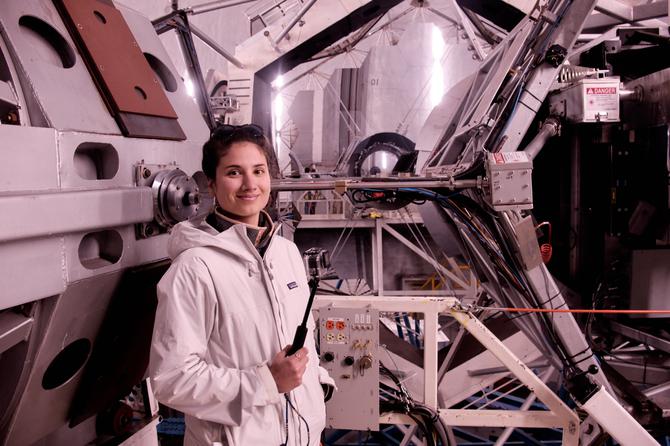
"These questions are all important in understanding the story behind our own solar system. The research that I do is exploratory, trying to discover and characterise new exoplanets, so that we have enough data to make informed conclusions about these planetary systems.”
Larissa Jerrim, PhD in Physics candidate
Growing up in Hobart, Larissa was supported by her family to enjoy maths and science from a young age.
She is currently undertaking a PhD in Physics researching Active Galactic Nuclei (AGN) jets, which are made of relativistic plasma and are shot out by magnetic fields near supermassive black holes at the centres of active galaxies.
“These AGN jets inflate cocoons of gas that are many times larger than their host galaxies and emit radio waves," Larissa said.
"These cocoons provide feedback for the environment surrounding their host galaxies, which helps to regulate star formation and is an important factor in galaxy evolution.
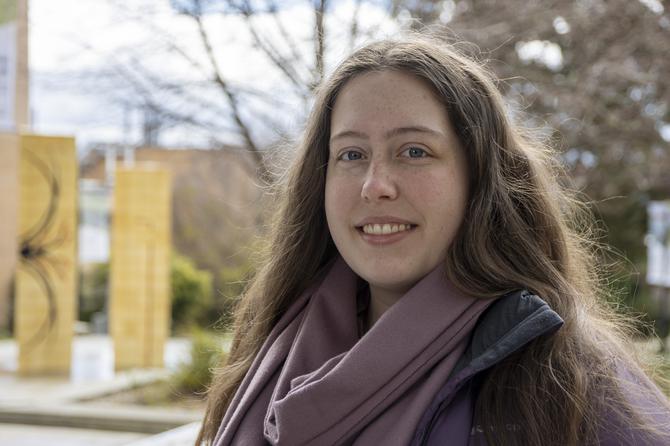
“In April last year, my team and our collaborators received one of the largest NCI computing grants for the Gadi supercomputer in Australian history. This grant was used to simulate a range of different AGN jets in realistic environments taken from cosmological galaxy formation simulations.
“During my project, I'll add to this collection with reruns of these simulations with magnetic fields in both the jet and the environment. Looking at the effect of magnetic fields on both the dynamics and the emission of the radio lobes is important for improving our models of these jets, as magnetic fields are integral in both the jet formation and radio emission processes.
My main inspiration is how, collectively, humanity has been able to look out into the stars and deduce what might be happening out there.
"I find it incredible that we have been able to create specialised equipment to look at and go into outer space and see what's out there, and then be able to figure out what might be happening.
"There's a lot we don't know still, but there's an amazing amount of stuff we're pretty sure about at this point. It fascinates me to no end.”
Lucia McCallum, Geodesist, ARC DECRA fellow and AuScope VLBI scientist
Lucia is a geodesist working within the University’s radio astronomy group whose field of research employs the Very Long Baseline Interferometry (VLBI) technique, using signals from far distant radio galaxies to measure the Earth.
She is a member of the AuScope VLBI project, working with the University's radio telescopes at Mt Pleasant, the Northern Territory and in Western Australia, in common measurements together with telescopes all over the world.
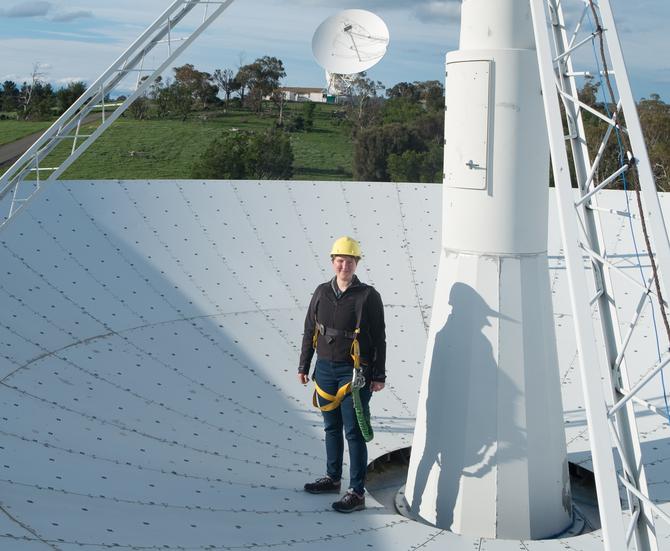
“I studied surveying, then specialised in Earth surveying. We can only observe the Earth by using space, in my case by looking at black holes.
Our observations help to establish the most precise coordinate frame of the Earth, and positions us in space. This is essential when you want to send a spacecraft to Mars, since you wouldn’t want to miss it.
“We are measuring how fast the Earth is rotating and how this changes. The Earth constantly changes its shape.
"These changes are driven by large mass distributions, for example triggered by climate change. A highly precise reference frame is essential to measure climate change and to observe the impact of any actions taken.”
Noor Masdiana (Mas) Md Said, PhD in Physics graduate
Mas moved to Tasmania from Malaysia in 2016 to study a PhD in Physics specialising in Active Galactic Nuclei (AGN).
Now she is preparing to relocate to the Netherlands to take up a postdoctoral position at the Joint Institute for Very Long Baseline Interferometry European Research Infrastructure Consortium (JIVE), where she will support a mission searching for life on Jupiter’s icy moons.
“I’ve been very keen to be an astronomer since I was 10 and am fascinated with studying the universe," Mas said.
"I am amazed by the technology of astronomy, the cutting-edge research and its spin-offs, and how it contributes to humanity and other scientific disciplines.
“The JUpiter ICy moons Explorer (JUICE) mission that I’ll be working on will perform detailed investigations of Jupiter and its systems in all their interrelations and complexity, with a focus on Ganymede as a planetary body and potential habitat.
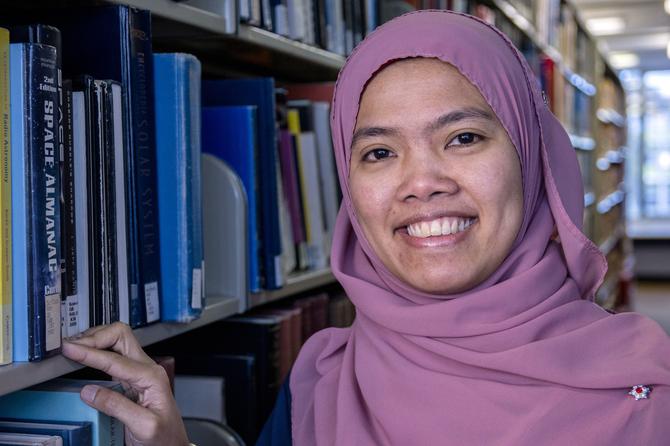
“Jupiter is the archetype for the giant planets of the solar system and for the numerous giant planets known to orbit other stars. Jupiter's diverse Galilean satellites - three of which are believed to consist of internal oceans - are important to understanding the habitability of icy worlds.
“Understanding the Jovian system and its history, from its formation to the possible emergence of habitable environments, will provide us with a better understanding of how gas giant planets and their satellites form and evolve.
"Furthermore, new light will be shed on the possibility of life emerging in Jupiter-like exoplanetary systems.”